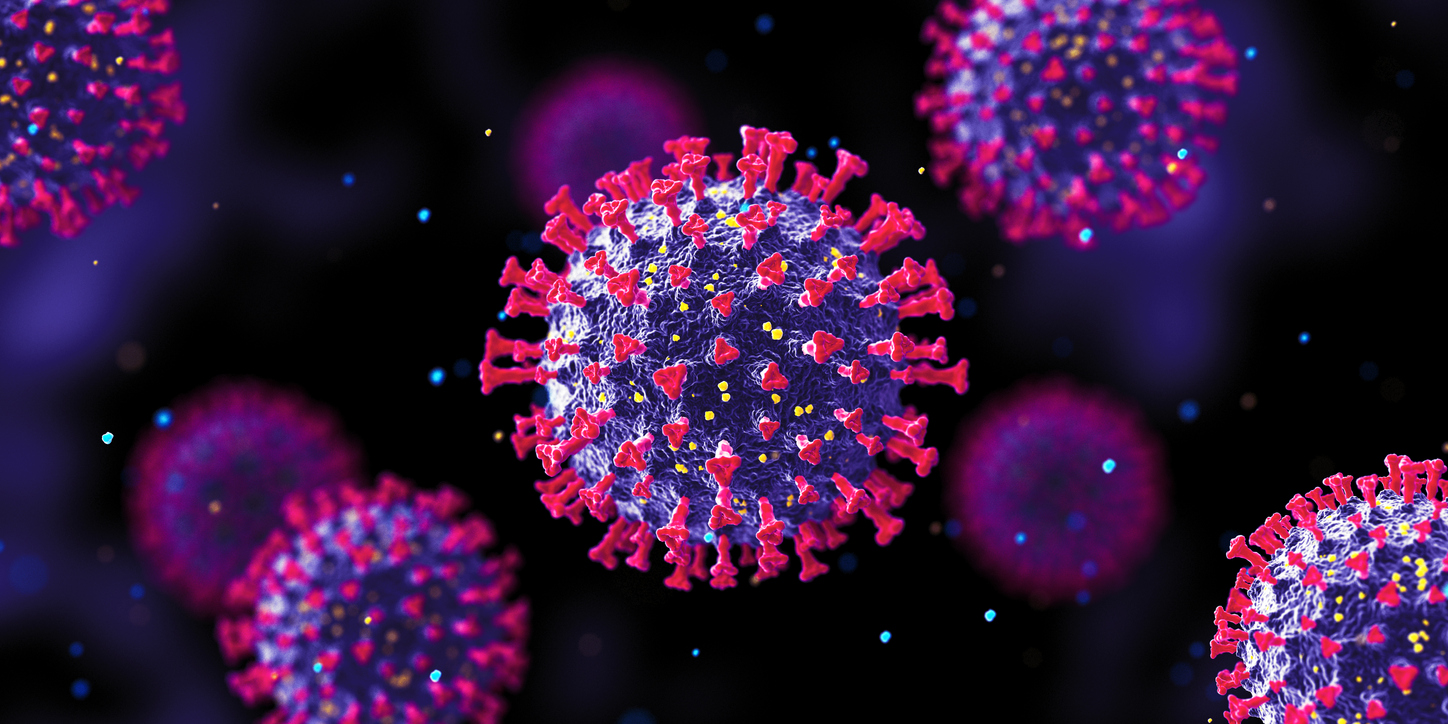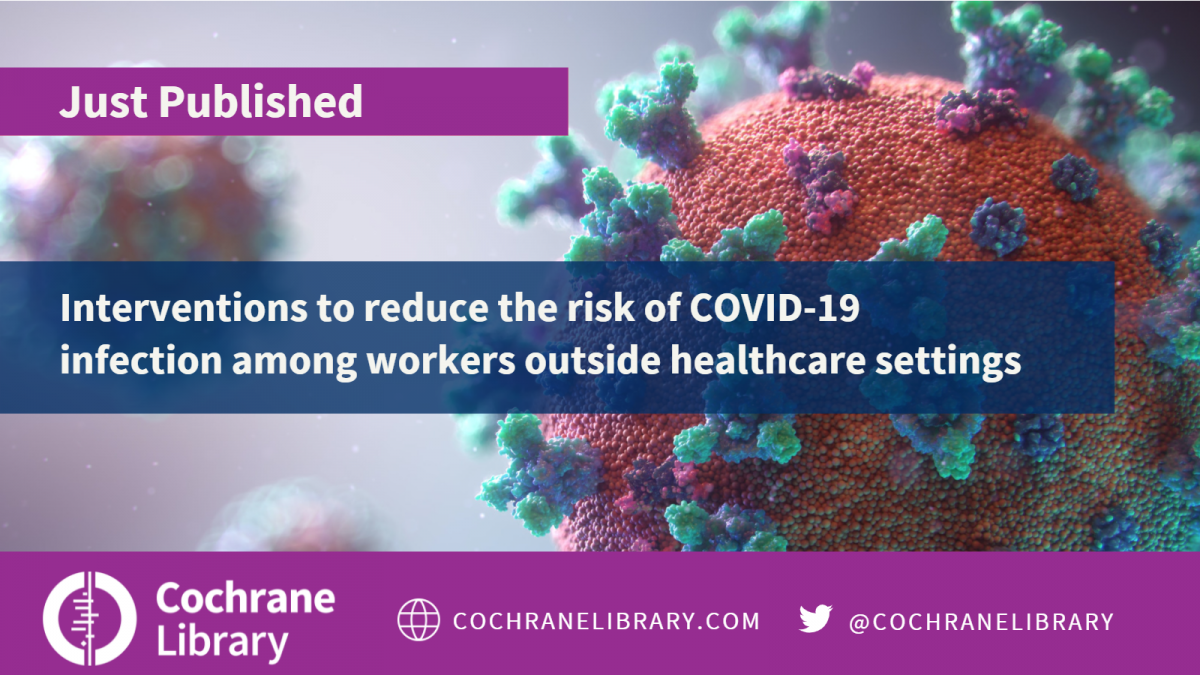
What is the aim of this review?
Coronavirus (COVID‐19) is a respiratory infectious disease that has spread globally. People infected with SARS‐CoV‐2 (severe acute respiratory syndrome coronavirus‐2) can develop critical illnesses and may die, particularly older people, and those with underlying medical problems. Different interventions that attempt to prevent or reduce workers' exposure to SARS‐CoV‐2 in the workplace have been implemented during the pandemic. This Cochrane Review evaluated the effects of these interventions on the COVID‐19 infection‐rate, absenteeism, COVID‐19‐related mortality, and adverse events.
What was studied in this review?
The authors searched for studies that examined interventions according to the following four categories: 1) elimination (for example self‐isolation strategies); 2) engineering controls (for example barriers to separate or distance co‐workers, and workers from members of the public); 3) administrative controls (for example working from home); 4) personal protective equipment (for example use of face masks or other types of face covering). We included studies of any worker outside the healthcare setting. We searched for studies without language or time restrictions.

What are the main findings of this review?
The author team screened more than 13 thousand reports, and included one study, conducted in 162 secondary and post‐secondary schools in England, from March to June 2021. The study enrolled more than 24 thousand workers. In the 86 schools in the control group (standard isolation), staff who were considered COVID‐19 contacts through contact tracing were required to self‐isolate at home for 10 days. In the 76 schools in the intervention group (test‐based attendance), staff who were considered COVID‐19 contacts through contact tracing were not required to isolate. Instead, they took a daily rapid test (lateral flow antigen test) for seven days. If the rapid test was negative, the staff member could go to work. If the rapid test was positive, the staff member would self‐isolate. The researchers wanted to know if there was a difference in COVID‐related absence between the two methods.
The author team are uncertain whether a strategy of test‐based attendance changes COVID‐19 infection rates (any infection; symptomatic infection) compared with routine isolation after contact with a person with COVID‐19. COVID‐related absence may be lower or similar in the test‐based attendance group.
However, they were uncertain about these findings, because the number of infections was very low among the participants. Mortality, adverse events, quality of life, and hospitalisation were not measured. Seventy‐one per cent of the test‐based attendance group followed the strategy; the researchers did not report on compliance for the standard isolation group.
The team identified one ongoing study that also addressed the effects of screening in schools.
Another ongoing study is evaluating the effects of using a face shield to prevent COVID‐19 transmission.
The authors did not find any studies that studied engineering or administrative controls.
Matteo Bruschettini, Director of Cochrane Sweden, who led the review explains,
“Millions of scientific papers are published every year, and during the pandemic there were many about covid-19. It is not an easy task to keep up to date with the results of all these. Systematic reviews are one way of weighing up all the studies carried out in a specific field and providing an overview of the results of these studies. This review investigating how workplace interventions reduced the spread of covid-19 assessed 13, 000 scientific articles published on the subject, however only one study could be included in the review.
Almost none of the studies had the study design required to answer the question of whether the effects of the intervention reduced the risk of SARS-CoV-2 infection in non-healthcare workplaces. This surprised us. These systematic reviews are important because they can provide answers to questions that are of extreme concern to millions of people in workplaces around the world.
We were able to identify two studies that had not been completed by September 2021 that may be included in the future. One assesses the benefit of face shields in preventing covid infection and the other looks at covid-19 screening in schools.”
How up‐to‐date is this review?
The author team searched for studies that were available up to 14 September 2021.

